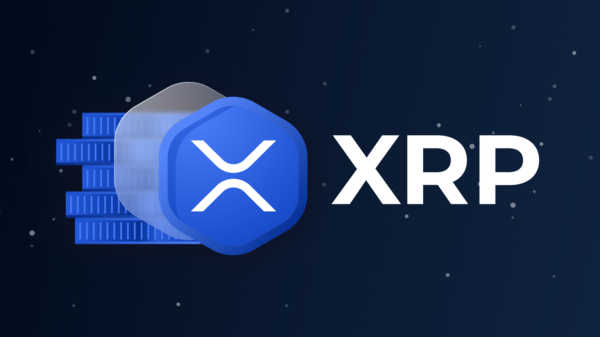With those details out of the way, it’s time to focus on exactly how to create a cryptocurrency using the following steps. It should be noted that, for those that have decided on developing a token, not every step shown here will be applicable; in this case, the initial three steps will be the most important.
1. Choose a Suitable Blockchain Platform
When creating a token, the first thing to do is to choose the blockchain that the crypto will be minted on. BSC and Ethereum are popular options, but sidechains can also be attractive options.
For the process of making a new coin, however, the creators will have to draw up specifications for a custom blockchain design, and hire the necessary specialists to bring it to fruition.
2. Decide on a Consensus Mechanism
Consensus mechanisms are the protocols through which the legitimacy of a particular transaction is established, and whether it is therefore added to the block. Such mechanisms form the basis for how participants confirm and validate transactions on the network.
For those developing a custom blockchain and lacking certainty over which option to pick, it can be helpful to consider which consensus mechanism best fits the overal vision for the coin. Most blockchains tend to adopt the Proof of Stake (PoS) model due to its low hardware requirements and different variations. Another popular option is Proof of Work (PoW), which is used on the Bitcoin blockchain and is considered by many to be highly secure, but costly to maintain.
3. Design the Blockchain Architecture
The process of creating a new cryptocurrency goes hand-in-hand with designing a native blockchain on which it can operate. This is a technically complex aspect of the process as it requires a deep understanding of blockchain, programming, and technical cryptocurrency skills. Happily, this step is only required when developing a new coin. It is important to note that not every blockchain allows users to validate transactions or run nodes.
The decision of whether to build a private, public, permissioned, or permissionless blockchain is perhaps one of the most important, as it will define the blockchain’s overall architecture and the direction of the project in general.
4. Begin Blockchain Development
This step generally requires the recruitment of external help to bring the ideas for the blockchain to life; unless of course the team behind it already possesses expert development knowledge. Once the blockchain is running on a live environment, it becomes extremely difficult to change its core concepts and rules, so it is extremely important to get this phase right, and to make use of a testnet to ensure that everything works as planned, and ideally secure cooperation with a whole development team to build the blockchain.
5. Audit the Crypto and Its Code
Cryptocurrency developers usually choose to hire specialized blockchain auditors to review their blockchain’s code and identify any vulnerabilities. This brings a level of safety assurance to the creator, as well as for any potential users or investors down to the line.
6. Align the Cryptocurrency with Legal Requirements
At the point that the blockchain is up and running, with the new cryptocurrency ready to be minted, it is time to ensure that the asset meets legal requirements, and to research precisely what that entails. This means filing for a license from the government of the local territory.
It is prudent for this stage of development to employ legal professionals to help confirm that the cryptocurrency complies with all relevant laws and regulations. For example, in the U.S, the cryptocurrency must be registered with the Financial Crimes Enforcement Network (FinCEN), and the Securities and Exchange Commission (SEC).
It is equally important to bear in mind that cryptocurrencies are banned in some countries, making it further sagacious to perform extensive research on the laws in the currency’s jurisdiction before launching it. Once that’s concluded, everything should be good to go!
7. Time to Mint the Cryptocurrency
Whether developing a a coin or a token, the cryptocurrency will need to be minted. Naturally, the precise method for this will differ based on the asset’s outlined tokenomics. Regardless, minting is an important aspect of keeping a crypto’s supply in line with users’ needs. The quantity of coins issued initially is entirely down to the creator: while some may decide to mint the entire supply of coins in a single batch, others elect to gradually increase the supply of the asset over time as new blocks are added to the blockchain.
8. Grow a Community Around the Cryptocurrency
having said all of this, there is still the golden rule: a new crpytocurrency won’t help anyone if no one knows about it. This is where focusing on marketing and promoting the new currency comes in. For this purpose, email marketing, blogging, and social media marketing can all be leveraged to increase awareness around a new cryptocurrency, while attracting users to invest in it at the same time.
If a cryptocurrency is not adopted, it is doomed to fail. One method often adopted to forst interest is giving a portion of it away for free, which serves as an incentive for early adopters.
Moreover, it is important to instill a sense of community to better facilitate communication with investors new and old. This also serves as an interactive platform where questions can be answered, and assurances given. After all, a cryptocurrency’s community needs to have a fundamental understanding of how it works to be able to commit their trust.
Final Thoughts
With that, we have outlined all the basic information one could need to achieve the dream of creating their very own cryptocurrency. Clearly, it is not an easy task, and should not be undertaken lightly as it will cost a great amount of both time and money. Clearly, a significant amount of expertise is also required, which can of course be outsourced, or gathered in a team of like-minded people willing to give it a shot.
it’s important to not get lost in creating a coin or token so much that the creation of an adequate post-launch plan is left by the wayside. For this, it is always helpful to study other projects and their launches to see what worked well, and what didn’t, or even to identify a niche.
















































